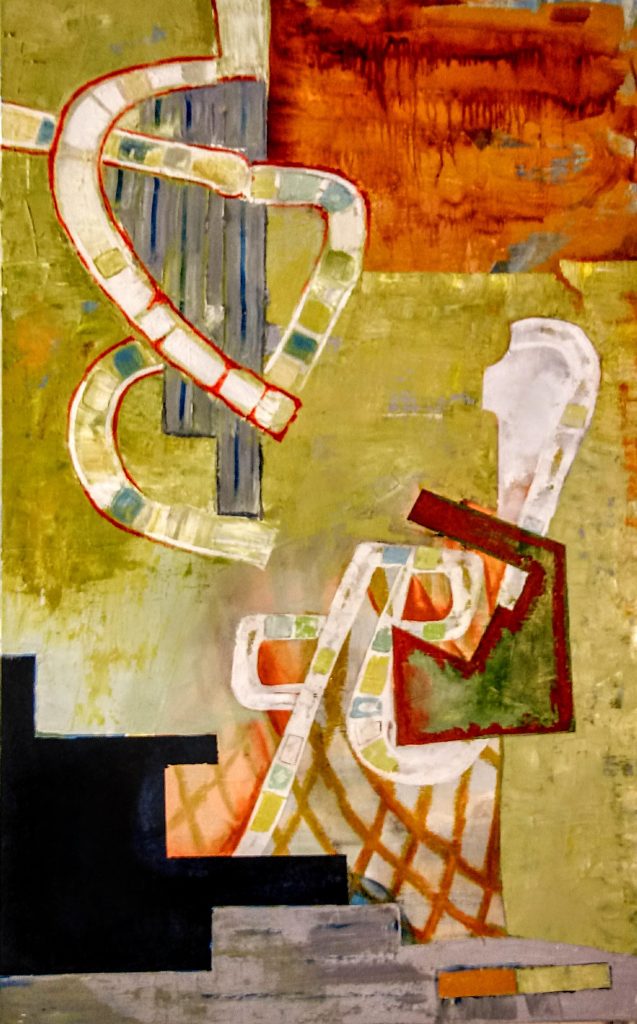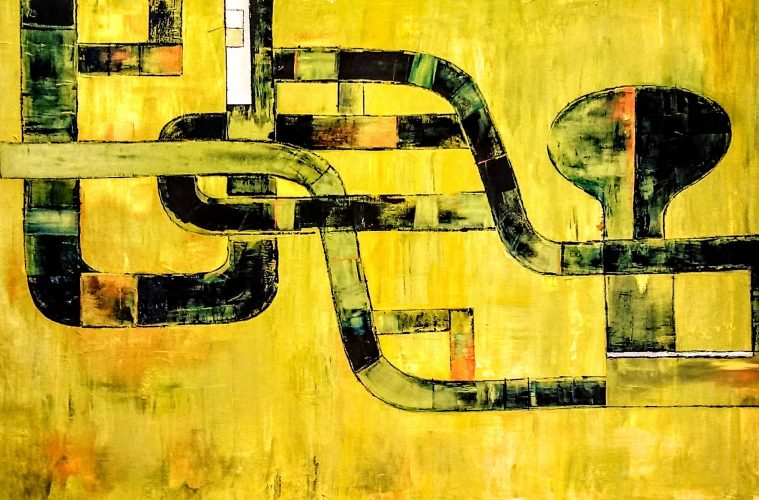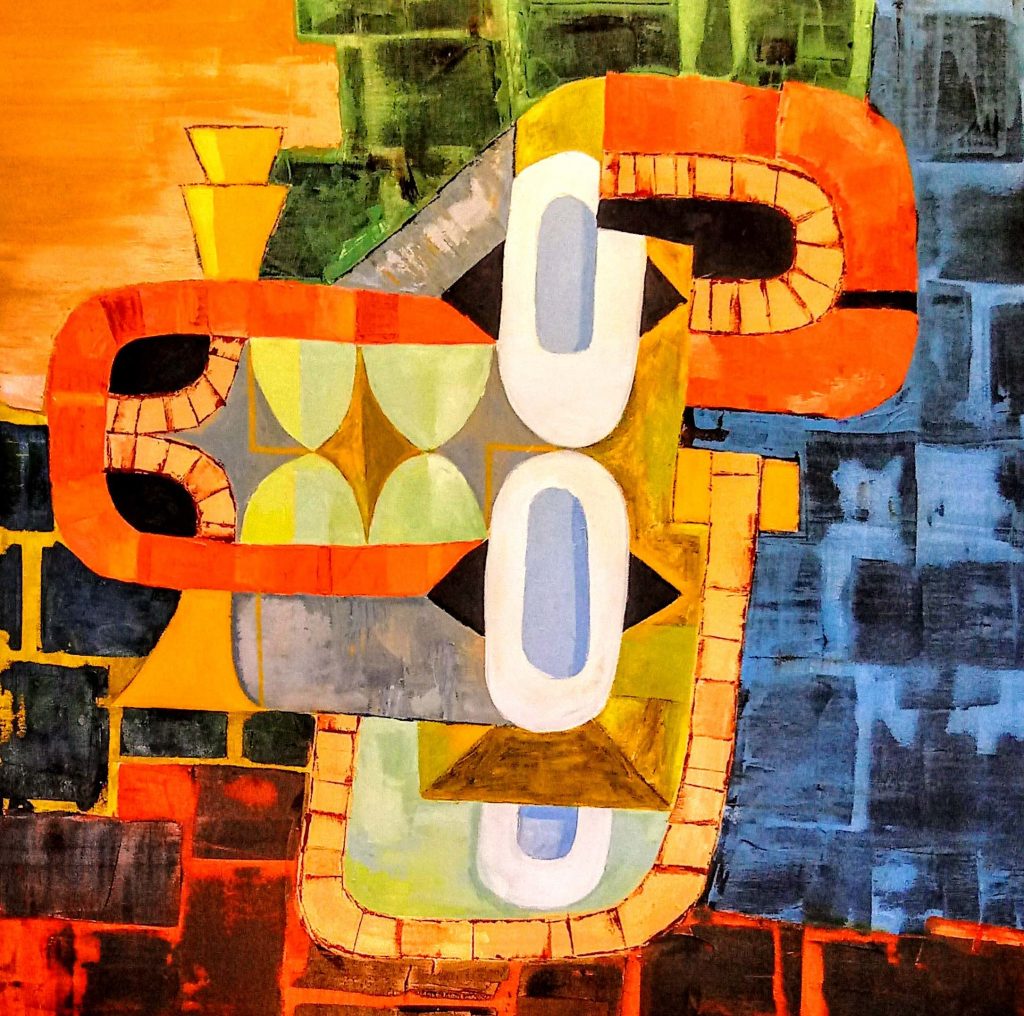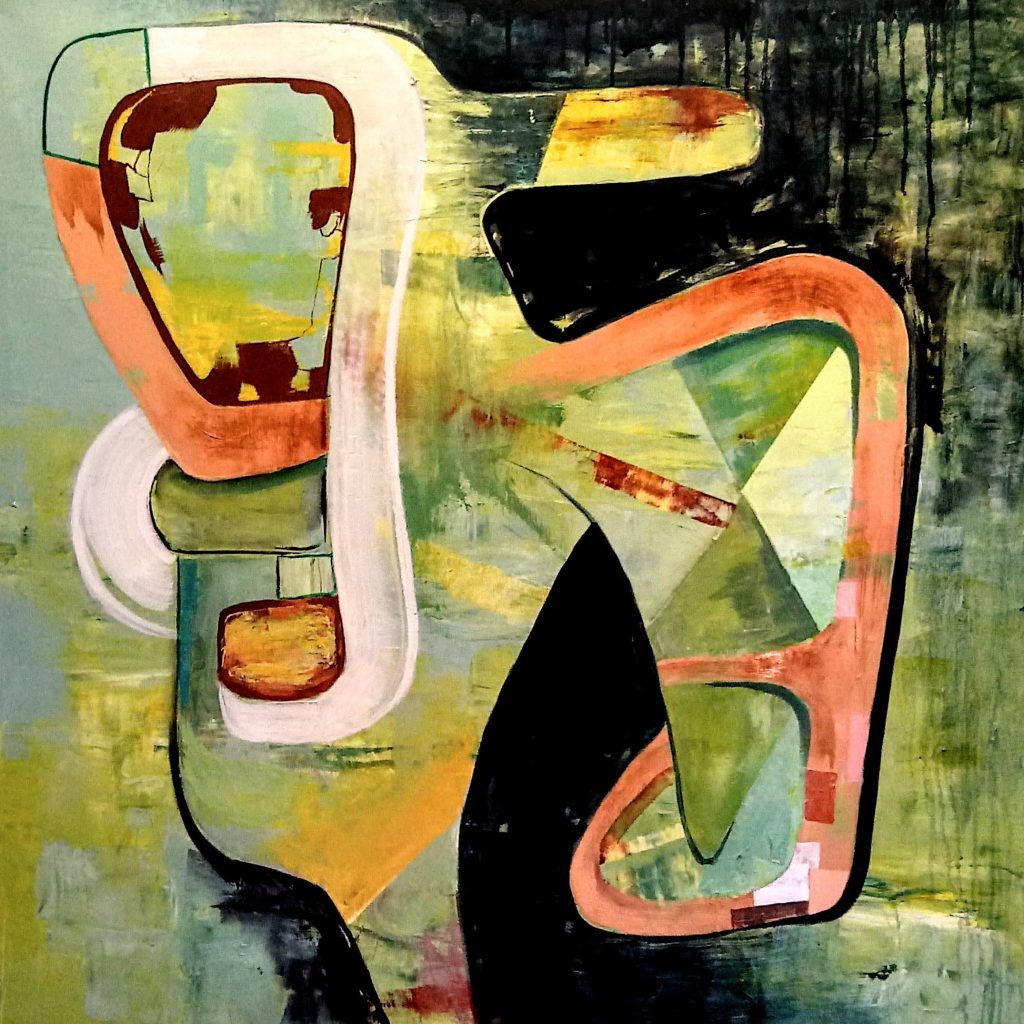Brian Fekete may have left Detroit years ago but he still carries a lot of it with him; something he says is well represented in his art. From Detroit, Fekete moved to Brooklyn, New York, where he took part in the beautification, or gentrification – depending on where you stand – of the burough. A visual artist, Fetete has since expatriated to the Mid-Hudson Valley, where he now works and lives creating new formal, as well as metaphorical, contexts for his found and appropriated imagery.
The artist cites sources as disparate as zoology, theology, body parts, and auto parts (the grasp of Detroit’s automotive cycle still full in his mind), employing a range of wet, dry, and collaged media often resulting in images that are entirely new, sometimes unsettling, but always ripe for conversation.
I ran across Fekete’s work on Instagram years ago and finally decided to get in touch; if, for no other reason, to see if he would help me navigate the artist’s beautiful debris. Thankfully, Fekete was up for the task. So, without further ado (and, I do think in this case I can actually utilize the phrase without cliché), let’s take a look at some of the work and hear some of the thoughts that combine to realize Brian Fekete’s psychological tableaux.
- 339 Brian Fekete Phunque, Oil on Canvas, 40 x 40, 2022
- 337 Brian FeketMessenger, Oil on Canvas, 40 x 40, 2022
____________________________
Anthony Brancaleone: Hello Brian. I find your artwork to be fascinating. Would you mind if we begin by you telling our audience a little about it and yourself?
Brian Fekete: I consider myself primarily an oil painter and draftsman. My work is basically abstract, even in the presence of recognizable subject matter. Beyond that, I don’t like to categorize it, because my drives, impulses and motivations won’t fit in a box. I was raised in an atmosphere of contemporary abstraction in the home during the 50s and 60s and, seeing it as quite normal, I was always drawn to its potential as I began a career in the 70s.
As a young art student, my first major epiphany was the work of de Kooning. Everything about it was boundless energy, rhythm, nature and history, and I still aspire to those tenets of modernism. My work is now, as it was then, an ongoing search for a personal visual lexicon that serves as the language of my painting.
AB: Tell us a bit about your life growing up and how you became an artist.
BF: I was born in hospital in Dearborn in 1955, living and growing up in neighborhoods both inside and just outside of Detroit. My family was in many ways a typical post-war baby boom scenario, with a generic bungalow built by my dad on a GI loan, a stay-at-home mom, and a Ford station wagon. Dad painted abstractly in the basement as far back as I remember and I knew from the beginning that this was what I wanted to do. I started making and inquiring about art before I started school and I never stopped. In my grade school years, Art in America and Artforum were all over the house and I absorbed their contents like a sponge, if only mostly for the pictures. Twenty-five years later in grad school, I would be assigned to write critical essays derived from articles in those very same publications. I attended Wayne State University for a degree in fine art, where I met my future wife, Nadine Slowik. We married in 1984, eventually buying a house on the east side. In 1997, Nadine was presented with a professional opportunity to move to New York. We had been visiting NYC regularly for 20 years and I loved it, but I could never see myself making a practical living there. I meditated on it, dared myself to do it, held my breath and we dove in. We lived in Brooklyn for 17 years before settling in the Hudson Valley in 2014.
AB: Living in Detroit for so many years I imagine it has remained an influence?
BF: I was born here [Detroit], living, learning and working for the first 42 years of my life. So many Detroiters had direct or indirect connections to the auto industry and my family was no different. I also grew up at the moment Motown and Detroit rock became cultural phenomena. As a child, going to the DIA was always a special treat and it really opened my eyes. Later, in my college years at WSU, the Cass Corridor art scene and the artist/educators it produced would introduce me to another new world of robust creative energy and inspiration. All of these things are inseparable to me and blend in my mind to create a particular local urban culture of art, music and industry that informed my own creative impulses.
AB: In general terms, from where do images appear?
BF: Whether you write, or compose or paint, I think you’re influenced by everything you’ve ever seen or heard, but which of these moments are injected into your work? And what does the subconscious contribute? Well, it’s all there, because art is an autobiography and a psychological profile. Music, musical structure, rhythms, cadences and tonal color constantly creep in as background influences for me, something I discovered early on. I’m not even musically inclined, although I have tried. I see music as a corollary or companion to visual art, because I see music in my mind. I always listen to music as I’m painting-all different genres, but jazz in particular. It’s so analogous to the foundations of contemporary image making, it’s just a different frequency, and I’m tuning in. Maybe it’s synesthesia, where some people hear colors, and numerals have specific colors. Also, I am drawn to certain shapes, like a figure eight, or an X or the color green, and I’m never certain of why, but if it clicks it becomes an impulse, and eventually an obsession that begins to define your practice. If you’re not merely mimicking a style or convention, you’re building a visual vocabulary of the self-conscious and the subconscious. This requires letting go with spontaneous expression regardless of the result. The best art is fearless and you have to risk screwing it up. This is always easier said than done. You can sit back and analyze it later. Successful or not, nothing is ever wasted in your efforts because every move is a lesson of value.

334 Brian Fekete Gantry and Boom, Oil on Canvas, 48 x 30, 2022
“Art is an autobiography and a psychological profile.” ~ Brian Fekete
AB: What is the purpose of art?
BK: Art is a purely human construct, and as trite as it sounds, art truly is a mirror. That’s why it’s such a threat to authoritarian societies. Art changes your mind, and not merely in a persuasive way. It changes your outlook. If you want to gauge a society’s personal values and liberty, look to the extent of its creative freedom first.
Art is willful. It’s synthetic. It’s contrived and dramatic, an exaggeration to the point of being a lie and yet it reflects right back to you every truth you ever or never wanted to feel. Art shows you what’s even possible to feel. So finally, I like to think that art is also a human superpower, given to a few to bring back to the many.
AB: Are you able to share with us some information on three persons who were instrumental in your development?
BK: Number one would be my father, James . He was trained to be an animator, a graphic designer and then became an interior designer, but I think he would have preferred the career of a full-time artist. Although he didn’t engage the gallery scene much, he regularly managed to sell large abstract works that were placed as part of the interior design in executive offices like Ford World Headquarters, and he did quite well with this arrangement. When he wasn’t in the office, he was painting. He was painting as far back as I can remember, and he was painting until a few days before his death at 93. As a child I remember discovering materials like terra cotta and Prismacolor pencils and often asked for art supplies. He always accommodated me. I also craved his approval but feared his criticism, which could be abrupt and harsh, and in my rebellious adolescence I grew to disagree with him more. The criticism seemed hurtful at the time, but I realize this exchange tempered my creative resolve. It gave me something constructive to react against because now as a young adult I realized I had something to say.
Number two is my undergraduate and graduate instructor, John Egner. He was an important figure in the Cass Corridor Movement and a guide for me into the art world at large. He was a talent to emulate for sure. John had a laid-back, deceptively easy-going style that belied itself in words of true wisdom and knowledge. His students revered him and when he spoke, all went silent to listen. With John, you were always treated with respect and genuine interest. He was a solid role model of what a working artist might be, and I miss him. Sadly, He passed away in 2021.
Number three is collector Florence Barron. Born at the turn of the 20th century, she started out as a designer living in Detroit and raising a family. When I met her, she was a tiny, soft spoken elderly woman with a top-knot bun. It sounds unassuming enough, but her love of modern art in post-war America took her on a journey of discovery that famously saw her advising Andy Warhol when she was about to sit for a portrait. She changed her mind and persuaded Andy to paint portraits of himself for the first time, thus creating a turning point in his career. She became the owner of the very first portrait, paying 1600. In 2011, the portrait sold at auction for 38 million! As a young painter in the 80s, all I knew of Florence was her mythic reputation as a collector and a kind of generous advocating angel for contemporary artists. I was stunned when, one day I received a call from her and she asked to make a studio visit. She visited our flat and bought two paintings directly from our basement studio! She asked me to deliver them to her apartment, and what a sight it was! The walls and floors were adorned with drop dead museum worthy paintings and sculptures like a Who’s Who of art. Stella, Winters, Marisol, Lichtenstein and of course, Warhol’s Jackie portraits, the very first he had done in gold pigment. The entire remainder of the space dropped away behind furnishings in soft white, glass and lucite, so as to give visual precedence to the art. This visit supplied me with a five-year supply of motivational steam!
AB: What incredible mentors and experiences you have had. Very strong. Now that you have been at it awhile – and, I think you gave this a bit of a nod earlier – does art imitate life or is it the other way around?
BF: This question recalls an age-old debate that makes my head hurt. It always implies an understood mutual awareness, that art and life must both be sentient, and they are. If art actually imitated life, then it wouldn’t be art, at least not very good art. The job of art is to reflect by way of expression, not imitation. Art upends the rational and objective logic of faithful description and prompts us about life by way of lies, hyperbole and artifice. If art is merely imitating, it’s not going deep enough. At the same time, it often draws from nature, human and natural events and the material world.
Life often looks to art for ideals. Writing novels about art, making films about art, (think Girl with a Pearl Earring). Fashion, (think a 60s Mondrian mini-dress). Architecture, (think Michael Graves’ post-modern office buildings) is life imitating art. Life does not depend on art for its existence and is capable of existing apart. In the meantime, art cannot be conceived in a vacuum, so art must draw from life in objective and non-objective ways. The end result is that life is so very much richer because of it.
AB: Well said, Brian. And, I think it’s one of the finer answers to what could be misconstrued as a toss away question that I have heard. Merci beaucoup, mon ami!



